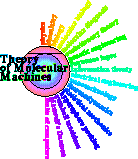
Schneider Lab
origin: 2002 January 24
updated: 2002 January 24
The Ev program performs an evolutionary gain of information without using the concept of 'fitness'. Instead, the number of matches between a recognizer and its binding sites that are missed is counted, along with the number of matches with incorrect locations on the genome. This gives the number of mistakes. In a second independent step, the organisms are sorted by the number of mistakes. Finally, organisms with the fewest mistakes are selected for.
Biologists often speak of a 'fitness landscape', presumably a multi-dimensional space of environmental factors. The fitness function over this space evaluates each point in the space. Organisms are then thougth to migrate to hills in this space.
One problem with this idea is that multidimensional spaces have properties that differ from the 2 dimensional images usually shown in diagrams. See ccmm for a discussion of these effects.
A more severe problem with 'fitness' is that organisms alter their environment, for example when they compete with each other. Thus in the Ev program the organisms early in an evolution survive perfectly well. In that sense they are 'fit'. However, as soon as one organism has found a way to lower its mistakes, the other organisms are 'unfit' and will die. So fitness is relative to the current environment (of course) and the fitness landscape changes as a result of where the population is on the landscape.
For these reasons I think that we should dispense with the concept of fitness in biology.
An interesting line of thinking is to consider that the word 'fitness' can be thought of as a (poor) measure of how well an organism fits to its current environment. From this we can think about molecular fits. When a protein recognizes a site on a piece of DNA, there is a precise molecular 'fit' between the two molecules. This is what the Ev program is measuring!
![]()

Schneider Lab
origin: 2002 January 24
updated: 2002 January 24
![]()